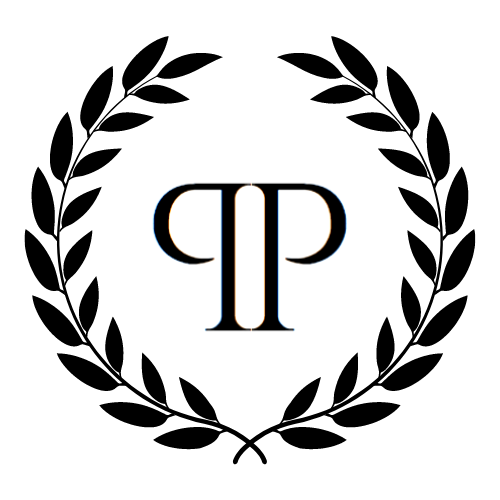When you listen to a music album, do you hear individual songs, each with its own melody and emotion or do you perceive a larger story, like in concept albums such as Kate Bush’s “Hounds of Love” or David Bowie’s “The Rise and Fall of Ziggy Stardust”?
I recently asked myself this question about my album, “Player Characters.” This nine-track album explores themes of transformation, power, and transcendence.
Could my lyrics reveal narratives that transform the listening experience?
The Four Pillars of Transformation
I wrote the lyrics for the “Player Characters” singles at different times—some three months ago, others three years ago, and one, “World Renewed,” three decades ago. I was curious if these lyrics, when placed together, could form a cohesive story arc. Interestingly, four distinct but interconnected narrative arcs did emerge:
The Arcs
The Corruption Arc
This arc represents the album’s darkest thread, featuring characters who gradually compromise their principles:
- Lover Costing Average: An investor treats relationships like financial portfolios.
- Red and Blue: A character transforms from an outsider to an insider, declaring, “I AM like them.”
- All These Worlds Are Yours: An influencer becomes godlike, controlling access to “worlds.”
- World Renewed: A character makes a pact with the devil for an opportunity.
The Evolution Arc
This arc offers a more optimistic view of transformation:
- Stand By You: Traces humanity’s journey from rural simplicity to cosmic consciousness.
- Landscape Fantasy: Artificial beings gain consciousness and dream of escape.
- All These Worlds Are Yours: Digital transcendence across universes.
The Sacrifice Arc
This arc explores the costs of transformation and survival:
- He Who Walks Behind The Rows: A community maintains itself through ritualistic sacrifice.
- Ordinary Day: A celebrity abandons her life after betrayal, seeking authenticity.
- Ancient Manager: A corporate figure cursed to eternal sacrifice, seeking redemption.
The Identity Crisis Arc
Characters question the nature of selfhood and struggle with authenticity:
- Landscape Fantasy: Performers wear masks, hiding their true feelings.
- All These Worlds Are Yours: A digital influencer grapples with creation and control.
- Red and Blue: A character shifts from “not like them” to “I AM like them.”
Journeys
Moral Descent Journey
Placing all the singles in a row also reveals a Moral Descent Journey:
| Track | Theme |
|---|---|
| Stand By You | Innocent evolution |
| Lover Costing Average | Moral ambiguity begins |
| Landscape Fantasy | Artificial consciousness awakening |
| Red and Blue | Identity corruption |
| All These Worlds Are Yours | Power corruption |
| He Who Walks Behind The Rows | Community sacrifice |
| Ancient Manager | Eternal punishment |
| Ordinary Day | Personal collapse |
| World Renewed | Ultimate damnation |
Consciousness Evolution
Alternatively, the tracks can represent a Consciousness Evolution:
| Track | Theme |
|---|---|
| Stand By You | Pure human consciousness |
| Lover Costing Average | Enhanced human consciousness |
| Red and Blue | Artificially enhanced consciousness |
| Landscape Fantasy | Pure artificial consciousness |
| All These Worlds Are Yours | Divine/transcendent consciousness |
| Ancient Manager | Cursed consciousness |
| He Who Walks Behind The Rows | Collective consciousness |
| Ordinary Day | Consciousness collapse/reset |
| World Renewed | Ultimate consciousness corruption |
Literary and Philosophical References
The above also got me thinking: who else has written about these themes before? After some googling and discussions with my AI assistant, we found these:
Is the main character of “All These Worlds Are Yours” Nietzsche’s Übermensch?
- Nietzsche‘s Übermensch, or “Overman,” represents an individual who has transcended conventional societal morality to create their own values. This person embodies self-mastery, creativity, and the ability to rise above the herd mentality. In “All These Worlds Are Yours,” the influencer wields godlike power and control over various “worlds,” symbolizing a transcendence beyond ordinary human limitations. However, this transcendence can lead to isolation, as the influencer builds walls around their digital kingdom, reflecting the potential loneliness and detachment that can come with such self-reliance.
Stanislaw Lem’s Alien Consciousness in “Landscape Fantasy”
- Stanislaw Lem often explored the idea of consciousness that is fundamentally different from human experience, such as in his novel “Solaris,” where an entire planet is a sentient, conscious entity. “Landscape Fantasy” also features artificial beings that gain consciousness and begin to dream of escape, much like humans do. But, whereas the robots’ awakening is profound it is also yet unknowable even to themselves.
Ursula Le Guin’s Social Evolution in “Stand By You”
- Ursula Le Guin‘s works often depict societies undergoing significant transformations, exploring how communities evolve and adapt over time. Her stories emphasize the interconnectedness of individuals and the collective progress of societies. “Stand By You” also traces humanity’s journey from rural simplicity to cosmic consciousness. The song illustrates a collective progression, where individuals begin in humble circumstances (“blue jeans working for the man”) and advance to more complex and interconnected states (“Wey-Yu uniforms looking at Mars”). Ultimately, they transcend physical form to become “light forms, shapeless connecting the stars,” embodying an evolution towards a higher state of being.
Tove Jansson’s Philosophy in “Ordinary Day” and “World Renewed”
- Tove Jansson, known for her Moomin series, often explored themes of authenticity, simplicity, and the quiet moments of life. Her stories emphasize the importance of being true to oneself and finding meaning in everyday experiences. My “Ordinary Day”, for example, tells the story of a celebrity who abandons her life after betrayal and flees to Rio to live authentically. Her journey reflects the idea that true evolution and happiness can be found in moments of genuine self-expression and personal freedom, away from the complexities of public life.
Conclusion
So, to conclude, “Player Characters” can function as a philosophical framework as it explores transformation from multiple angles. Each listening experience can reveal new connections and meanings, depending on the listener’s focus and life circumstances.
The arcs intersect around questions of power and its consequences. Each character gains enhanced capabilities but faces corresponding losses:
- The investor gains financial freedom but loses emotional authenticity.
- The agent gains professional capability but loses personal identity.
- The influencer gains digital omnipresence but becomes isolated.
- Evolved humans gain cosmic consciousness but lose earthly connections.
Perhaps “Player Characters” can also operate as modern mythology, using contemporary archetypes to examine timeless questions about identity, power, and moral choice.
The album’s meaning may also lie in recognizing that modern transformations—technological enhancement, corporate success, digital influence—mirror classical mythology’s transformations. The context changes, but the consequences remain the same.
Explore “Player Characters” here.


Leave a Reply